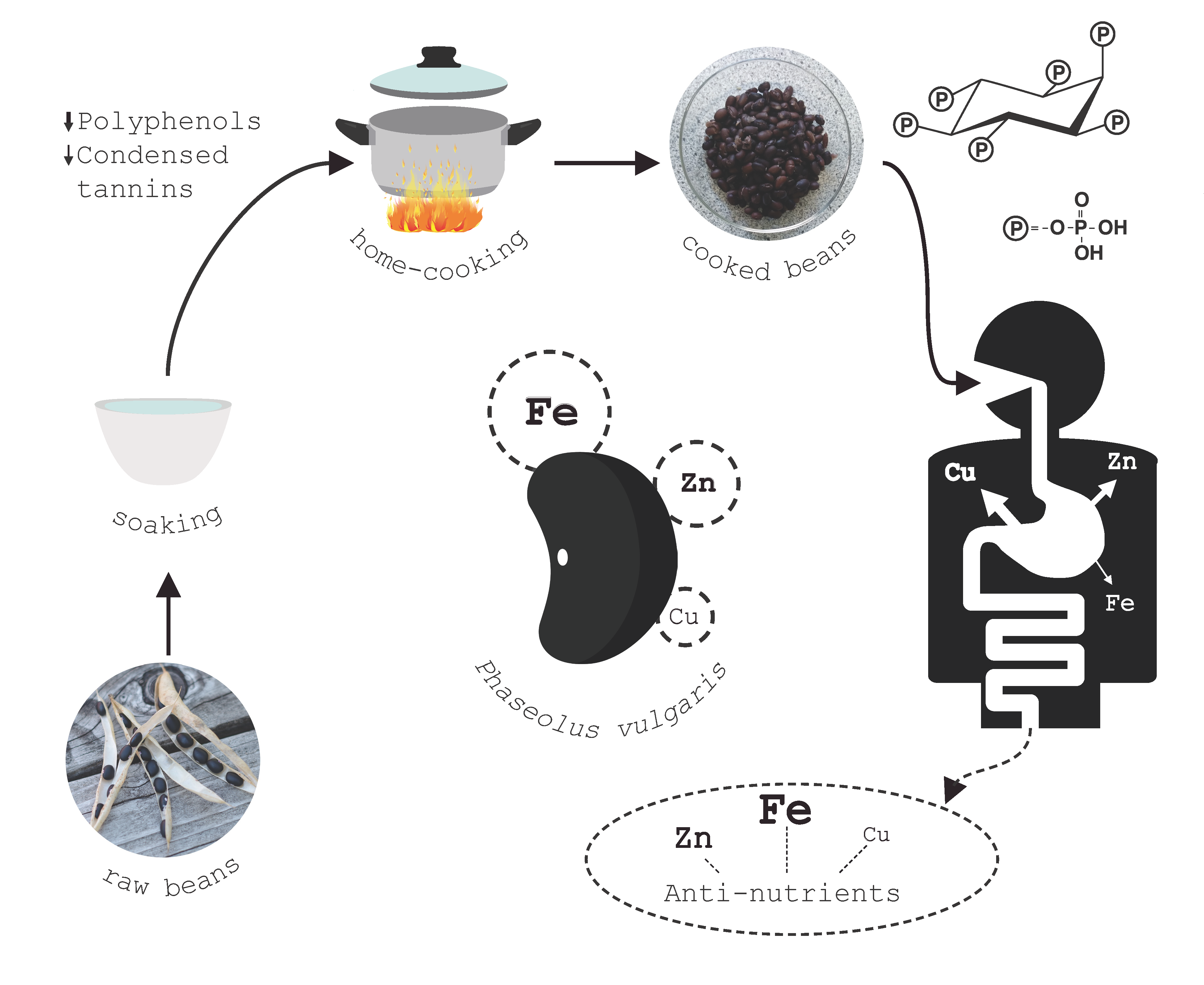Micronutrient deficiencies are a major public health problem. Beans are an important plant-based source of iron, zinc and copper, but their absorption is reduced in the presence of anti-nutrients such as phytates, polyphenols and tannins. Soaking and discarding the soaking water before cooking is unanimously recommended, but this can result in mineral loss. Data on the consequences for mineral bioaccessibility is still limited. This study aimed to evaluate iron, zinc and copper bioaccessibility in black beans cooked (regular pan, pressure cooker) with and without the soaking water. Minerals were quantified by ICP-MS, myo-inositol phosphates (InsP5, InsP6) by HPLC ion-pair chromatography, total polyphenols using Folin-Denis reagent and condensed tannins using Vanillin assay. Mineral bioaccessibility was determined by in vitro digestion and dialysis. All treatments resulted in a statistically significant reduction of total polyphenols (30%) and condensed tannins (20%). Only when discarding the soaking water a loss of iron (6%) and copper (30%) was observed, and InsP6 was slightly decreased (7%) in one treatment. Bioaccessibility of iron and zinc were low (about 0.2% iron and 35% zinc), but copper presented high bioaccessibility (about 70%). Cooking beans under pressure without discarding the soaking water resulted in the highest bioaccessibility levels among all household procedures. Discarding the soaking water before cooking did not improve the nutritional quality of the beans.

